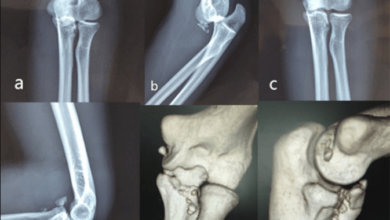What is Heterogeneous Echotexture Liver and Why Should You Care?

The liver is one of the most important organs in our body, responsible for filtering toxins and producing vital hormones. However, when you hear the term ” echotexture liver,” it can be alarming. This condition affects the appearance and texture of the liver and can potentially indicate underlying health issues. But don’t worry – this article will explain what heterogeneous echotexture liver is, its causes, and how to prevent it from affecting your health. So sit back, relax, and learn about this important aspect of your wellbeing!
What is the liver?
The liver is the largest internal organ in our body, located on the right side of the abdomen. It plays a vital role in digestion, metabolism, and detoxification.
Additionally, the liver produces bile – a digestive fluid that helps break down fats and absorb nutrients from food. It also stores glucose (sugar) as glycogen for future energy needs and converts it back into glucose when required by the body.
It extracts excess hormones from our blood to maintain hormonal balance in our bodies. Moreover, it synthesizes proteins necessary for various bodily functions like blood clotting and immunity.
We cannot overstate how crucial the liver is to maintaining good health. Keeping this organ healthy should always be a top priority!
What is heterogeneous iver?
The liver is one of the most vital organs in our body, responsible for carrying out many essential functions that keep us healthy. It plays a significant role in digestion, metabolism, and detoxification.
However, at times the liver may develop certain abnormalities that can affect its functioning. One such condition is echotexture liver.
Heterogeneous echotexture refers to an abnormality observed on ultrasound imaging where the texture of the liver appears irregular or uneven. In simpler terms, it means that different parts of the liver have varying appearances or densities.
This condition can be indicative of various underlying health issues like fatty liver disease, hepatitis B or C infection, cirrhosis of the liver, and alcohol abuse among others.
It’s important to note that not all cases of heterogeneous echotexture are problematic and require medical attention.
Timely intervention and appropriate treatment can help manage this condition effectively and prevent further complications from developing over time.
Causes of heterogeneous echotexture liver
Heterogeneous echotexture liver is a condition where the liver tissue shows uneven texture on an ultrasound scan. This can be caused by a range of factors, including certain medical conditions and lifestyle habits.
One of the most common causes of the echotexture liver is fatty liver disease. This occurs when excess fat accumulates in the liver cells, leading to inflammation and scarring over time.
Another possible cause of echotexture liver is viral hepatitis. Hepatitis B and C are both known to cause inflammation in the liver that can lead to scarring and changes in texture over time.
Other potential causes include autoimmune disorders such as lupus or rheumatoid arthritis, as well as genetic conditions like hemochromatosis or Wilson’s disease.
It’s worth noting that sometimes no specific cause can be identified for this condition – it may simply occur due to natural aging processes or other unknown factors.
If you’re concerned about your own risk for developing echotexture liver, talk to your doctor about any underlying health issues you may have and how best to manage them moving forward.
Prevention of heterogeneous echotexture liver
Prevention of heterogeneous liver can be achieved by adopting a healthy lifestyle. This includes having a balanced and nutritious diet, exercising regularly, and avoiding excess alcohol consumption.
Eating foods that are low in fat and high in fiber can help to maintain a healthy weight and reduce the risk of developing fatty liver disease, which is one of the causes of the echotexture liver. It is also important to stay hydrated by drinking plenty of water throughout the day.
Regular exercise helps to improve overall health by reducing inflammation levels in the body. This can lower the risk of developing chronic conditions such as diabetes or cardiovascular diseases that could lead to liver damage.
Alcohol consumption should be limited or avoided altogether since it puts significant strain on the liver, leading to potential damage over time.
By making these simple changes in your lifestyle habits, you can significantly reduce your risk of developing heterogeneous liver while improving overall health and well-being. Read more…
Conclusion
Having a heterogeneous echotexture liver can be an indication of underlying health concerns. It is important to monitor your liver’s health through regular check-ups and screenings. Maintaining a healthy lifestyle by exercising regularly, eating a balanced diet, avoiding excessive alcohol consumption, and managing chronic conditions such as diabetes or obesity can also help prevent the development of this condition.
If you are experiencing symptoms related to liver disease or have been diagnosed with echotexture liver, it is important to seek medical attention from your healthcare provider for proper diagnosis and treatment options. Remember that early detection and intervention can make all the difference in preserving your liver’s function and overall well-being.




